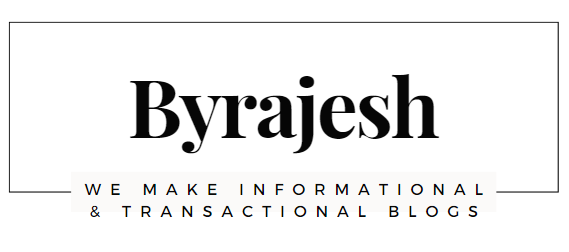NPCI extended the deadline to UPI Apps on 30% of cap implementation
NPCI Soon Impose 30% Cap Limit to 3rd Party UPI Apps
The National Payments Corporation of India (NPCI), the apex body responsible for setting up the Unified Payment Interface (UPI), announced a 30% cap on UPI transactions. This limit applies to both existing and new players in digital payments. It means that people in India may be unable to perform unlimited UPI transactions via payment apps such as Google Pay, PhonePe and other apps.
Unified Payment Interface (UPI) was launched in April 2016 by Dr. Raghuram G Rajan, Former Governor of RBI. It is a very popular fund transfer system, which is convenient and fast. Real Time Gross Settlement (RTGS) and National Electronic Fund Transfer (NEFT) also facilitate merchant payments; however, they are not popular channels for day-to-day purchase of goods and services because – (a) RTGS requires a large amount of money to be transferred, and is mostly used for business-to business payments; and (b), NEFT is not an instant payment system and confirmation of receiving funds in the merchant’s account takes time. UPI, unlike these, facilitates instantaneous credit with real-time confirmations and It allows users to make instant transfers between accounts held with banks across India without having to wait for days for clearance.UPIs are similar to IMPS.
UPI has brought revolutionary changes in the payment ecosystem of India, with more and more consumers signing up to pay via the system. While transactions made through UPI are free of cost at present.
Is 30% Cap Only Way To Prevent Monopolisation?
Of Course Yes, In order to avoid concentration risk, National Payments Corporation of India (NPCI) has sent a proposal to the Reserve Bank of India (RBI) to impose a 30 % volume cap on UPI transactions and 30 % of Cap will be determined by the number of transactions processed in the past three months.
This cap is a step towards preventing monopolisation of the payment system. The RBI & NPCI is going to ensure that no single player dominates the market for Unified Payments Interface (UPI) transactions.
At the end of Oct-22, transactions done through UPI reached the new height which is Rs.1211582.51 Crores. In fact, according to the National Payments Corporation of India (NPCI), payments through Google Pay and PhonePe account for the majority of these transactions.
Effect of the new proposal, Third Party App providers like GPay, Phonepe and Paytm etc cannot have more than 30 % of the volume of overall UPI transactions. They have a 2 year timeline to comply with the new rule.
The government has been encouraging Make In India policies for quite some time now. The UPI market is currently dominated by third-party applications such as Google Pay, phonePe, and Paytm. So to avoid concentration risk, National Payments Corporation of India (NPCI) encourages banks and non-banks to take steps to increase their reach among consumers through their digital channels.
In fact at present, PhonePe and Google Pay have 47% and 34% market share respectively.
The following Third Party Application providers will share 4.3 % of market shares. It’s evident that PhonePe and Google Pay are dominating the markets and not allowing new competitors to survive.
| S.No | Third Party Application Provider | Payment Service Providers ( Banks ) | Handle Name |
| 1 | Amazon Pay | Axis Bank | @apl |
| Yes Bank | @yapl | ||
| 2 | Bajaj Finserv | Axis Bank | @abfspay |
| 3 | Bajaj MARKETS (Finserv Markets) | Axis Bank | @abfspay |
| 4 | CoinTab | Federal Bank | @fbl |
| 5 | CRED | Axis Bank | @axisb |
| 6 | Fave (Pinelabs) | IDFC FIRST Bank | @idfcbank |
| 7 | Goibibo | ICICI bank | @icici |
| 8 | Google Pay | Axis Bank | @okaxis |
| HDFC Bank | @okhdfcbank | ||
| ICICI | @okicici | ||
| State Bank of India | @oksbi | ||
| 9 | Groww | Axis Bank | @axisbank |
| 10 | Jupiter Money | Axis Bank Limited | @jupiteraxis |
| 11 | Make My Trip | ICICI | @icici |
| IndusInd Bank | @indus | ||
| 12 | MobiKwik | HDFC Bank | @ikwik |
| 13 | Phonepe | Yes Bank | @ybl |
| ICICI Bank | @ibl | ||
| Axis Bank | @axl | ||
| 14 | Samsung Pay | Axis Bank | @pingpay |
| 15 | Slash | ICICI Bank | @icici |
| 16 | slice | Axis Bank | @sliceaxis |
| 17 | SuperPay (Chintamoney) | Kotak Mahindra Bank | @kmbl |
| 18 | TataNeu | ICICI Bank | @tapicici |
| 19 | Timepay | The Cosmos Co-Operative Bank Ltd. | @timecosmos |
| 20 | tvam (Atyati) | Yes Bank | @yesbank |
| 21 | Ultracash | IDFC Bank | @idfcbank |
| 22 | ICICI Bank | @waicici, @icici | |
| Axis Bank | @waaxis | ||
| HDFC Bank | @wahdfcbank | ||
| State Bank of India | @wasbi | ||
| 23 | YuvaPay | Yes Bank | @yesbank |
What happens if a payment app exceeds the cap?
There is no clarity on whether payment platforms will be allowed to exceed the 30% limit set by the Reserve Bank of India (RBI). But according to industry experts, there is a good chance that this might happen.
In fact, there are cases where a payment app exceeded the cap. Many times in 2022, PhonePe & Google Pay crossed the 30% threshold.
According to industry experts, the following scenarios are possible:
- The platform gets fined
- The platform gets banned
NPCI extended the time limit to TPAP on 30% of cap implementation
National Payments Corporation of India (NPCI) has set a cap of 30% on the total volume of UPI transactions processed by Third Party App (TPA) providers and as per the earlier circular which will come into place from Jan 2023.
Some reports indicate that stakeholders requested the NPCI to extend the deadline and they are currently examining it for now. Third Party Application Providers (PhonePe and Google Pay) have been given another two years to comply with guidelines set by the NPCI. NPCI new circular NPCI/UPI/OC-97/2020-21 dated December 2, 2022 on “Guidelines on volume cap for Third Party App Providers (TPAPs) in UPI”.
Taking into account the present usage and future potential of UPI, and other relevant factors, the timelines for compliance of existing TPAPs who are exceeding the volume cap, is extended by two (2) years i.e. till December 31, 2024 to comply with the volume cap.
Meet Rajesh

I am Rajesh from India, the founder and owner of byrajesh.com
Currently I am working as an Automation Test Analyst in an MNC Company, while working in a comfortable position I always think of my future and next move.

COPYRIGHT ©2022, BY byrajesh. ALL RIGHTS RESERVED.



